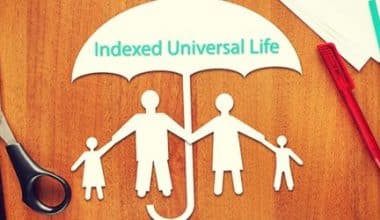Shopping for life insurance coverage does not have to be difficult. Learn how partnering with an agent makes it simple to apply for a life insurance policy online and get cheap coverage for your family.
Step-By-Step Guide for Getting a Life Insurance
The steps below can assist you in making key decisions regarding the life insurance policy you choose, the quantity of coverage you require, and the insurance company you choose.
#1. Determine Whether You Require Life Insurance
One of the first questions to ask before looking for life insurance is whether you need it. Most people, according to the Insurance Information Institute (iii), do. Despite the fact that everyone’s personal and financial situations are unique, a life insurance policy can be a helpful safety net. This is especially true if any of the following conditions are met:
- If you died, your family or beneficiaries would face financial difficulties.
- After you die, your dependents will be saddled with a mountain of debt.
- You wish to pay for last expenses such as a funeral, burial, or medical care.
- You want to cover the expenditures of a dependent’s tuition, daycare, or retirement.
What if you already have life insurance through your policy? LIMRA warns consumers not to rely only on their employer-sponsored life insurance policy, which may not provide a large safety net in the event of the death of a key wage earner. With the loss of one income, 25% of dual-income households in the United States would have financial difficulties within one month, and 42% would face financial difficulties within six months.
Take note of the death benefit, or the lump sum your beneficiary would receive if you died if you have an employer-sponsored life insurance policy, often known as group life insurance. If it is insufficient to meet your needs, a stand-alone life insurance policy may be a smart option. Employer life insurance may not accompany you after you quit your employment, according to Catherine Theroux, Director of Public Relations at LIMRA.
#2. Determine the Amount of Life Insurance Required
The amount of life insurance you require is determined by a number of factors, including your personal and household income, the needs of your dependents or prospective beneficiaries, and your financial objectives. Here are some questions to ask when determining the amount of coverage on your life insurance policy:
- How will my income loss affect my dependents?
- How long do I want my income to support my recipient financially?
- How much money would my dependents or spouse require to pay the mortgage or rent?
- What, if any, day-to-day expenses do I wish to cover for my beneficiaries?
- How will my loved ones pay for end-of-life expenses such as funeral bills, estate taxes, and so on?
- Do I want my life insurance policy to be passed down as an heirloom?
- Do I want a portion of my life insurance policy to be donated to a charitable organization?
It might be difficult to determine how much life insurance coverage you require. The answer frequently takes various aspects of your whole financial condition into account. As a result, it’s a good idea to discuss your worries and goals with a reputable financial advisor, who can assist you in identifying a policy that supports your beneficiaries as well as your overall financial strategy.
#3. Determine the Best Type of Life Insurance for You
There are two forms of life insurance to consider: term life insurance, which lasts for a fixed amount of time, and permanent life insurance, which protects you for the rest of your life. Understanding the distinguishing features of each type might assist you in selecting the best one.
1. Term Life Insurance
Term life insurance policies have the following characteristics:
- Coverage is only available for a short time, often between 1 and 30 years.
- Life insurance is frequently the least-priced option.
- Predictable premiums and a death benefit guarantee
The term life insurance is life insurance that provides coverage for a set period of time, known as a term. This comprises both short-term policies that are active for one to five years and long-term policies that are active for 15 to 30 years.
Term insurance products normally feature fixed, sometimes known as “level,” rates that remain constant during the term of your policy. Term life insurance also provides a guaranteed death benefit or a set amount of money that your beneficiary will receive upon your death, as specified in your contract.
With term life insurance, you may be able to choose between two types of death benefits. One is level, which means it will remain constant for the duration of the policy. The other provides a declining death benefit. This means that the amount of money your recipient will get will diminish throughout the course of the policy’s life.
Term life insurance policies can also be renewable, which means they can be renewed at the end of their first term. They can also be convertible, which indicates that the policy can be turned to a permanent policy.
When you buy term life insurance, your beneficiary will only receive the death benefit specified in your contract following your death. This policy has no monetary value or investment component, and you cannot borrow or withdraw from it while you are alive.
2. Life Insurance
Permanent life insurance coverage covers you for the rest of your life. Your coverage will not be interrupted as long as you make your regular premium payments. Permanent life insurance, like term life insurance, has a death benefit that is paid to beneficiaries after they die.
Permanent life insurance often includes a cash value component as well. The cash value is distinct from the death benefit and operates similarly to an investing account, from which you can withdraw or borrow available funds. When you pay your premium, a portion of your payment is deposited into an investment account. The cash value can also increase or decrease depending on the sort of insurance policy you have. In some circumstances, growth is determined by interest rates or the success of stock and money market mutual funds. In others, the value grows when the insurer distributes a percentage of firm earnings to account holders as dividends. If you’re looking for permanent life insurance, talk to an agent about cash value growth choices to see which policy is right for you.
3. Whole Life Insurance
Whole-life insurance policies have the following characteristics:
- Coverage that lasts the life of the policyholder
- Flexible premium payment choices with a death benefit guarantee
- Possibility of accessing the policy’s cash worth prior to death
Whole life insurance, like term insurance, provides a guaranteed death benefit, though rates vary depending on the type of policy you purchase.
These policies, which are a type of perpetual life insurance, often include a cash value that you can access before death, either by borrowing against or withdrawing from the cash value account or by using the cash value to meet premiums. The manner in which the cash value grows is determined by the type of policy chosen. There are whole-life policies in which the cash value accumulation is established at the start of the policy, as well as policies in which the cash value rises dependent on dividends provided to you by the insurer.
4. Universal Life Insurance
Universal life insurance has the following characteristics:
- Coverage that lasts the life of the policyholder
- Premium payments that are flexible and death benefits
- Cash value that increases due to tax-deferred interest earnings
This is another type of permanent life insurance that allows policyholders to keep coverage for the life of their lives. Premiums and death benefits are not fixed in this type of policy and can be altered by the policyholder. This allows certain policyholders to modify their policy based on changing life circumstances. However, policy value and premiums can vary depending on the performance of the investment market.
In addition, universal insurance includes a cash value that grows depending on tax-deferred interest earnings. The cash value, on the other hand, can fluctuate depending on how successfully (or poorly) the company’s investments perform. If you have a universal life policy, you can access the cash value or use it to pay premiums as long as the cash value exceeds the premium payment.
5. No Exam Life Insurance
A no-exam life insurance policy has the following features:
- There is no need for a medical exam.
- A speedier application process is typical.
- Both term and permanent policies are available.
No-exam life insurance is any permanent or term policy that does not require a medical exam to obtain coverage. Individuals who want to forgo a medical test or who want faster and easier access to life insurance may find this an appealing choice.
This does not imply that providers approve applications or set premiums arbitrarily. An underwriter analyzes available data to accept applications and establish premium rates without depending on a medical exam. The information could come from a variety of places, including medical and driving records. Insurance companies may also rely on data from the MIB Group (formerly known as the Medical Information Bureau), a consumer reporting organization for insurance.
There are costs and benefits. A no-exam life insurance policy is usually more expensive than the alternative. When compared to other insurance, these policies may potentially provide less coverage and flexibility. You may not be able to convert a term policy to a permanent coverage policy, for example.
#4. Determine Whether You Require Life Insurance Riders
Riders are optional benefits or features that you can add to your policy to generate customized coverage that is tailored to your individual needs. Riders are available to policyholders in a variety of forms, and each might affect your premium.
Life insurance contracts commonly include the following riders:
1. Children Rider
Parents can add their children to the policy with this rider. If the kid dies before reaching the age indicated in the rider, the insurer will pay the policyholders a death benefit.
2. Accelerated Death Benefit Rider for
If you include this rider, you may be able to access your death benefits before you die if you have a terminal sickness or disease.
3. Accidental Death Benefit Rider
This, sometimes known as a double indemnity rider, increases the death benefit your beneficiary will get if you die as a result of injuries received in a covered accident.
4. Waiver Premium Rider
Including a premium waiver rider in your policy may protect you if you are unable to pay the needed premium due to an injury or illness that renders you handicapped.
If you want to add riders to your policy, make sure you talk to your agent, broker, or insurance provider first. Because availability, eligibility, and restrictions vary by firm and policy, it’s critical to thoroughly understand the rider and the triggering situations before including it in your policy.
#5. Select a Life Insurance Company
Today’s thriving life insurance market provides consumers with a diverse range of providers and policy options. Customers can also work with an insurance agent, insurance broker, or insurance firm. Understanding the distinctions between each term can assist you in locating a firm and policy that matches your requirements.
Insurance Agent
An insurance agent is a licensed professional who sells insurance products to consumers such as life, vehicle, and house insurance. They can be either a captive agent, representing a single insurance company, or an independent agent, representing many insurance firms.
Insurance Broker
Rather than representing one or more insurance firms, the broker operates as a go-between for their clients and the insurance market. Individual clients are assisted by insurance brokers in locating, reviewing, and comparing insurance policies from various businesses. However, they do not underwrite, bind, or otherwise supervise policy purchases.
Insurance Company
An insurance company, often known as a provider, insurer, or carrier is a business that packages sell, underwrites, and binds insurance policies. They are also the entity in charge of processing and paying claims.
Tips on Choosing an Insurance Company, Agent, or Broker
Regardless of which option you select, there are a few things you can do to ensure that you’re working with a reputable agent, broker, or organization and that you’re getting the best policy for you and your beneficiaries.
1. Examine Licensing
To offer insurance in your state, both insurance companies and agents must be licensed. Any reputable agent or insurance business should be able to offer this information, but you can also check with your state’s insurance department, finance department, or other comparable governmental body that oversees insurers.
2. Examine the Company Ratings
Several independent agencies assign ratings to insurance firms based on their financial strength, or ability to pay claims. Before you get insurance, read over the ratings from two or more of the most reputable providers.
3. Obtain Feedback and Referrals
Official ratings might provide a decent indication of a company’s financial strength, but other people’s experiences can also be helpful. Friends, relatives, and trusted financial professionals, such as an advisor, can also assist you narrow down your search for a life insurance agent, broker, or firm.
4. Look for Bundling Deals.
Customers who combine plans receive discounts from several insurance carriers. If you already have another insurance policy, such as homes or auto insurance, ask your carrier if they offer life insurance and, if so, if they give a multi-policy discount.
5. Look around.
Shopping around and comparing insurance providers, policies, and premiums is one of the finest things you can do before obtaining a new policy. An insurance broker can assist you with this. An insurance company or agent can also provide you with a free insurance quote. Before making a decision, the Insurance Information Institute suggests obtaining at least three estimates.
6. Think About Your Preferences
Personal preferences and expectations can also influence your decision.
Some questions to consider:
- Did the agent or broker pay attention to your needs and respond to your questions?
- Would you rather manage everything online or with an in-person meeting agent?
- Do you want to work with a company that provides no-medical-exam insurance?
When all else is equal, the best insurance provider, agent, or broker is the one that makes you feel at ease and who shares your preferences and aspirations.
How Important Is the Financial Rating of an Insurance Company?
An insurance company’s financial rating might reveal vital information, such as how likely it is that it will pay out insurance claims. As a result, you should normally select a life insurance provider that is known for paying out eligible claims.
Several independent agencies monitor and rate insurance firms, and you should contact two or more of the following before acquiring a policy. AM Best Company, Inc.; Fitch Ratings; Kroll Bond Rating Agency, Inc. (KBRA); Moody’s Investor Services; and Standard & Poor’s (S&P) Insurance Rating Services are among the most well-known agencies.
Each agency has its own scoring technique and statistic. For top-rated insurers, the major rating agencies normally use a variety of ratings beginning with a version of A (e.g., A++, AAA).
In general, the higher the rating, the more trustworthy the insurance company is. Life Happens, a consumer-focused insurance educational resource warns consumers against making judgments solely based on ratings, owing to the fact that ratings might differ from agency to agency.
Best Life Insurance Companies of 2023
| COMPANY | SAMPLE MONTHLY COST | AM BEST RATING | LEARN MORE | |
| Haven Life »4.4U.S. News Rating | $81.16 | A++ | Compare Quotes » | |
| Bestow »4.3U.S. News Rating | $56.00 | A+ | Compare Quotes » | |
| New York Life »4.1U.S. News Rating | $142.67 | A++ | Compare Quotes » | |
| Northwestern Mutual »4.1U.S. News Rating | N/A | A++ | Compare Quotes » | |
| Lincoln Financial »4.0U.S. News Rating | $57.81 | A+ | Compare Quotes » |
Monthly expenditures for a $1,000,000 coverage policy with a 20-year term are based on a 35-year-old female.
#6. Purchase Your Insurance Policy
It’s time to start the application process when you’ve determined the type and amount of coverage you require, checked free quotations, and compared firms. The purchase procedure might differ depending on a number of factors, including the type of policy, the business you choose, and whether you engage with an agent, broker, or directly with the company.
Filling out the Life Insurance Application
When acquiring your policy, you’ll need to fill out a life insurance application, either online or on paper. Regardless of the way you apply, you’ll normally be required to supply basic contact information (e.g., name, phone number, email address, etc.) as well as the sort of policy you intend to purchase. You may additionally require the following details:
- Social Security Number
- License to drive
- The birthdate
- Gender
- Relationship status
- Occupation
- Financial details (e.g., salary, net worth)
- Medical and health information (e.g., height, weight, medical conditions, prescriptions)
- Information on Nicotine or Tobacco Use
- Name(s) of Beneficiary(s)
- Birthday of the Beneficiary(s)
- Social security number of the beneficiary(s)
Having a Medical Exam
You may be required to undergo a medical checkup or screening depending on the type of policy you select. During the checkup, a medical practitioner will take crucial health information such as your weight, height, and blood pressure. Blood and urine samples may also be taken.
If you are unable or choose not to have a medical test, you should look into a no-exam life insurance policy.
Choosing a Recipient
When you buy your policy, you must also choose your beneficiary, who is the person or entity who will receive the policy’s death benefit if you die.
You can name one or more persons as beneficiaries of your policy, such as children and a spouse or partner. If you include more than one beneficiary, you must explain how much of the death benefit each beneficiary will get. For example, if you choose your spouse and a child as beneficiaries, you can designate 40% of the policy to your husband and 60% to your child.
However, you are not required to specify a specific individual as a beneficiary. As the beneficiary, you can select a charity, your estate, or a trustee. If you do not name a beneficiary or the named beneficiary is unable to be found, the death benefit will be paid to your estate.
Furthermore, iii suggests naming a primary beneficiary as well as a contingent beneficiary. If you die and your primary beneficiary is still alive and can be contacted, the death benefit will be paid to them. If your primary beneficiary dies or cannot be found, the death benefit will be paid to the contingent beneficiary.
Selecting a Minor as a Beneficiary
When deciding on a life insurance policy to provide for your children after your death, listing them as beneficiaries on your policy may appear to be the ideal option. If your beneficiary is a minor at the time of your death, the insurance company may refuse to pay the benefit to the child. Instead, the case may be heard in probate court, which will appoint a guardian.
You can avoid probate court by selecting a custodian who will supervise the funds until your child reaches adulthood or by establishing a living trust and naming your child as a beneficiary of the trust funds.
If you name a youngster as the beneficiary of your life insurance policy, consult with a financial advisor about the best strategy to guarantee the death benefit monies are appropriately managed and distributed to your child.
Can You Purchase Life Insurance Online?
Yes, you may acquire life insurance online. Some insurance companies specialize in providing instant life insurance, which frequently makes use of algorithms in order to present you with an instant pricing quote, provided that you qualify for the policy based on your age and your health.
If you have some health issues, the insurer may elect to go with a more traditional life insurance process, which will take more time and may entail a medical test for life insurance. This will occur only if you have such health issues.
Can I Buy Life Insurance from Someone Else?
You can buy life insurance for another person, but in order to do so, you need to demonstrate that you have an “insurable interest,” which means that your finances would suffer if the other person passed away. A good illustration of this would be purchasing life insurance for a spouse. You have the option of being the beneficiary of the policy, which will allow you to collect the death benefit.
On the other hand, you cannot obtain an insurance policy on someone else without that person being aware of it. That’s not how insurance companies do business, and if they did, the prospective policyholder would have to sign the application.
At What Age Should You Buy Life Insurance?
Your life insurance premium will often be more affordable if you buy it when you are younger. However, this is predicated on the assumption that you are in generally good condition. Because age is one of the strongest predictors of mortality, the older you get, the greater the likelihood that you will pass away during the policy period, which will result in the life insurance company having to pay out your death benefit. This is because age is one of the strongest predictors of mortality. Because of this, rates often increase as people progress into their later years. However, not everyone requires life insurance, even at later ages, so you should assess your case with a professional life insurance agent before deciding whether or not to purchase life insurance.
How Much Does It Cost to Get Life Policy?
The premiums for life insurance are not uniformly expensive for anybody. In most cases, premiums are calculated using a mix of factors such as the following: The kind of coverage that you go with The minimum required level of protection Your age and gender Tobacco usage Medical conditions Report of driving history Occupation Hobbies, particularly if they involve high-risk activities such as skydiving or bungee jumping Whether or not there are any policy riders present. Your choice of premium payment method is another another aspect that may have an effect on the total cost of your life insurance policy. A good number of insurance companies give their policyholders the option of making either monthly or annual payments. On the other hand, you might have the option of selecting various payment schedules, such as quarterly or semi-annual installments. The monthly premium is often the least expensive of all the payment alternatives; however, you will need to ensure that this payment commitment is accounted for in your monthly budget.
What Are the Best Life Insurance Companies?
There is not a single life insurance provider that can be singled out as being superior to all others in every circumstance. You might look at the different companies’ client reviews, financial stability, and the kinds of coverage alternatives they provide in order to choose the business that is best suited to your needs. You may also benefit from obtaining many estimates from different companies to figure out which one can provide the best product and riders at the most affordable price.
How To Get Life Insurance FAQs
How much does it cost to purchase life insurance?
This type of insurance policy typically costs between $40 and $55 per month. The true cost is determined by the type of insurance, the amount of coverage, and personal circumstances. Permanent life insurance is more expensive than term life insurance and is used differently.
What is the process of getting life insurance?
Choosing a plan and coverage amount, applying for a policy, and, in some situations, taking a medical test are all part of the life insurance coverage process. To save time and avoid issues throughout the application process, be prepared to answer questions about yourself, your lifestyle, and your medical history.
What age should you get life insurance?
Even if you don’t “need” it, your twenties are the best age to purchase modest-term life insurance coverage. In general, when you’re younger and healthier, you pose less risk to an insurer, which is why you get the best prices.
Related Articles
- BASIC LIFE INSURANCE: Definition and What It Covers
- WHOLE VS TERM LIFE INSURANCE: Which is Better?
- Irrevocable Beneficiary: A Definitive Guide
- BEST POLICY MANAGEMENT SOFTWARE: 2023 Reviews
- MORTGAGE BROKER: How To Find One






